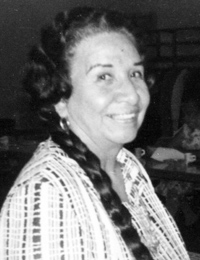
By Jerry Klinger


CHENEY, Washington — The Great Drum was rhythmically beaten by ten Native American Salish Singers seated about it. Their Song drifted over the Palouse Prairie as it had before for untold years.
Hundreds gathered on the high ridge above Eastern Washington University, below the white colored water tower with the school’s logo, a huge black and red eagle painted on its side. The logo had been changed in the 70s because empowered Native American students threatened a complete boycott unless the school rid itself of the demeaning moniker, the Eastern Washington “Savages.”
Students, faculty, friends, visitors, representatives of local Indian Nations, the Spkins (Spokanes), Coeur DE ‘Leans, Flatheads, Colvilles, and others stood in respectful silence as the Prairie land was blessed.
Eastern Washington University had returned one-third of its farmland, to be restored to the condition it had been before the White Man came. The purpose was to relearn the natural, native ways of land management and sustainability for generations to come.
A distant hill was pointed out.“That is where the Lucy Friedlander Covington Center will be” President of EWU Dr. Mary Cullinan said.
Carol Evans, the Chairman of the Spkins, spoke with reverence of the Land and its meaning to Native Americans. She spoke of the Great Spirit who has given the responsibility for the life of the Land to the Native American tribes.
Privately, after the program, I asked her if the Land was Holy. Without a moment of hesitation and a firmness to her eye she answered. “Yes” she said, “yes, the Land is Holy.”
We were directed back to the main campus for the second part of the historic day, the dedication of the Lucy Friedland Covington historical interpretive marker in the center of the Campus. EWU has over 9,500 students and staff and employees. The Covington marker, in front of the “One Room Schoolhouse Museum,” will be a testament to Lucy’s story for years to come.
The dramatic, large silver and black highway style Lucy Friedlander Covington marker was funded by the Jewish American Society for Historic Preservation.
The text of the marker understatedly told her story.
Lucy Friedlander Covington
(1910 – 1982)“If an Indian doesn’t have land, he has nothing.”
From the 1940’s – 1960’s, U.S. Indian Policy was Termination. The policy strove for Native American Tribes to sell their lands to the government. The Tribes would disband and “assimilate” into American society, ending their unique identities.
Covington was a member of the Colville Tribal Council when Termination was proposed. She recognized Termination would end the Colville people. Virtually alone at first, she fought Termination, Council member by member. The Council turned against Termination.
Covington repeatedly traveled to Washington, D.C. lobbying Congressional leaders why the Termination policy was an injustice to Native Americans. Covington’s efforts attracted broader and broader support from the Native American Communities. 1970, President Richard Nixon ended Termination.
Lucy fought for Colville rights. She ended protecting the rights and heritage of all Native Americans.
Covington was the great-granddaughter of Chief Moses.
Her mother was Nellie Moses, granddaughter of Chief Moses.
Lucy’s father, Louis Friedlander, was of Nez Perce/Okanagan and Jewish ancestry.
For more on Lucy: EWU.EDU/COVINGTONLucy Covington Center, Eastern Washington University, Jewish American Society for Historic Preservation
I was asked to say a few words before unveiling the marker with Dr. Cullinan. What to say when not prepared and not expecting to say anything had been made simple by Carol Evans. – The Land was Holy.
On the ridge overlooking the Palouse Prairie greetings and blessings were made in Native American tongues over their Holy Land. I too began my talk in my ancient language. I welcomed and thanked all for the opportunity to place a marker to a remarkable woman, Lucy Friedlander Covington. I spoke in Hebrew. At first, everyone was confused. A few picked up the word “Shalom.” I switched to English. I shared with them a parallel story that very, very few have heard, or hear ever.
I looked out over the crowded grounds and said simply – “The Land is Holy.” I repeated it again stronger and louder. Heads bobbed in agreement.
The Land was given by the Great Spirit to the Native Americans to be lived on, to be respected and to be honored forever.
My people, the Jewish people, have been exiled, banished from our homeland, Israel, given by God to us to be stewards, to protect and to nourish forever. We have returned after two millennia. We too love the Land and call it Holy.”
My talk was short, there were others who wanted to say words about Lucy.
When writing the text for the Lucy marker with representatives of Eastern Washington University, I asked that a very important quote from Lucy be verified. It was.
In one sentence Lucy succinctly conveyed what it meant to a Native American to be denied their Land – “If an Indian doesn’t have land, he has nothing.”
The Jews too were denied our Land. We roamed homeless, uncertain, suffering anti-Semitism, expecting banishment which did occur and reoccur many times. Yet, we never never separated our “Holy Land” from our soul. Nor did, nor does the Native American from theirs.
Lucy, a Native American who honored her Jewish antecedents, always treasured and was willing to fight for her Land, and for the Land of all Native Americans.
*
Jerry Klinger is president of the Jewish American Society for Historic Preservation,
www.JASHP.org.